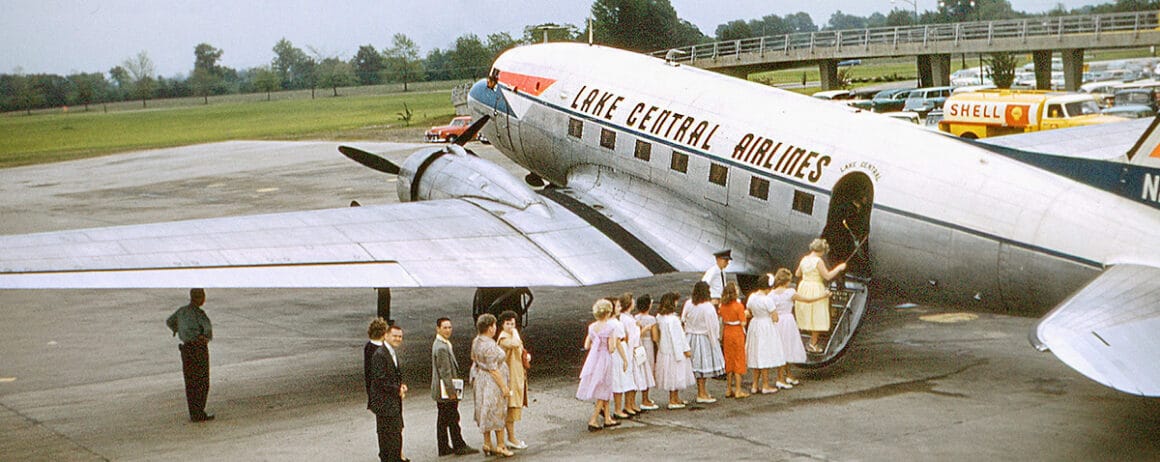
THE NIGHTMARE THAT BEGAN ON HALLOWEEN
Powered by two Turbomeca Bastan turboprop engines driving variable pitch propellers, the Nord 262 could carry 27 passengers (comparable to a DC-3) in pressurized, air-conditioned comfort. An unobstructed view of the world below was made possible by the aircraft’s high-wing design. Such amenities as built-in tray tables and pull-down window shades, conveniences taken for granted today, would be upgrades for passengers accustomed to the DC-3.
Takeoff performance was enhanced by a water methanol mixture injected into the engines.
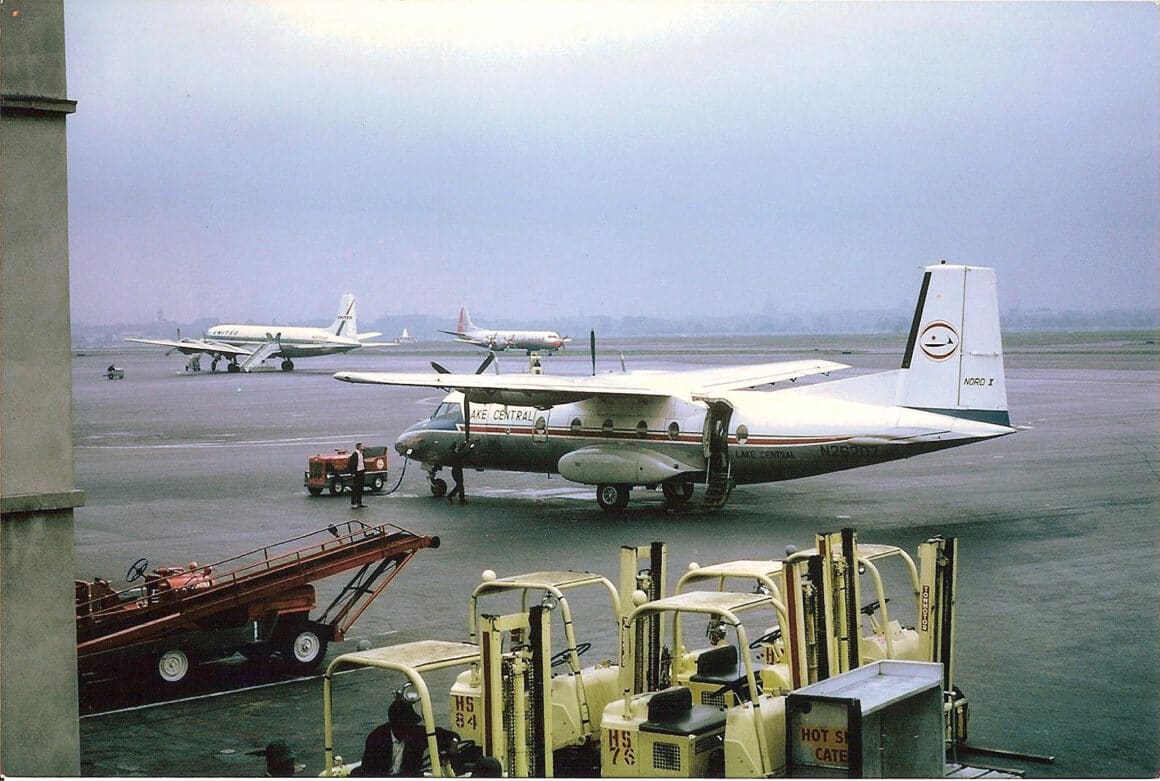
Lloyd Hartman, Lake Central’s president, was sold on the Nord and wanted his airline to be the first in the United States to fly it. Going a step further, he signed with the French company for Lake Central to be the exclusive dealer for selling Nord 262s in the USA.
The new bird was introduced into scheduled service over Lake Central’s routes on October 31, 1965 – Halloween Day. It was appropriate timing for the nightmare that lay ahead.
At first it was a matter of maintenance delays and cancellations, often experienced when a new aircraft is going through the teething process. But then the Turbomeca Bastan engines started to suffer catastrophic failures… in flight! No fewer than four of these incidents took place. Fortunately, a safe landing was executed after each event.
The last two engine explosions happened a week apart in August of 1966, one near Morgantown, the other near Martinsburg, West Virginia. In both instances, parts of the engine penetrated the fuselage and entered the cabin, seriously injuring two passengers in the Morgantown incident.

The entire Nord 262 fleet was removed from service until the source of the trouble could be identified and fixed. The DC-3s, sitting in retirement awaiting new buyers, were brought back on the line to fill in for the grounded French birds.
Nord engineers eventually discovered the source of the engine failures: corrosion caused by the water methanol injection system. They resolved the problem and the 262s were returned to service in February 1967, rebranded as Nord IIs. But damage had been done to the aircraft’s reputation and the sickening reality was that this was the aircraft that Lake Central Airlines had banked its future on.
THE FINAL BLOW
Lake Central had begun conversion of its Convair 340s to jet-prop status with the installation of Allison turboprop engines. The public’s attention was now being directed to these jet-prop airliners, which were branded Convair 580s. Diverting attention from the Nord IIs, the re-engined Convairs were advertised on timetable covers with an image of their distinctive propeller blades and the airline’s logo in the center of the prop hub. Sadly, it would be those distinctive blades and prop hub that would write the next chapter in Lake Central’s history.
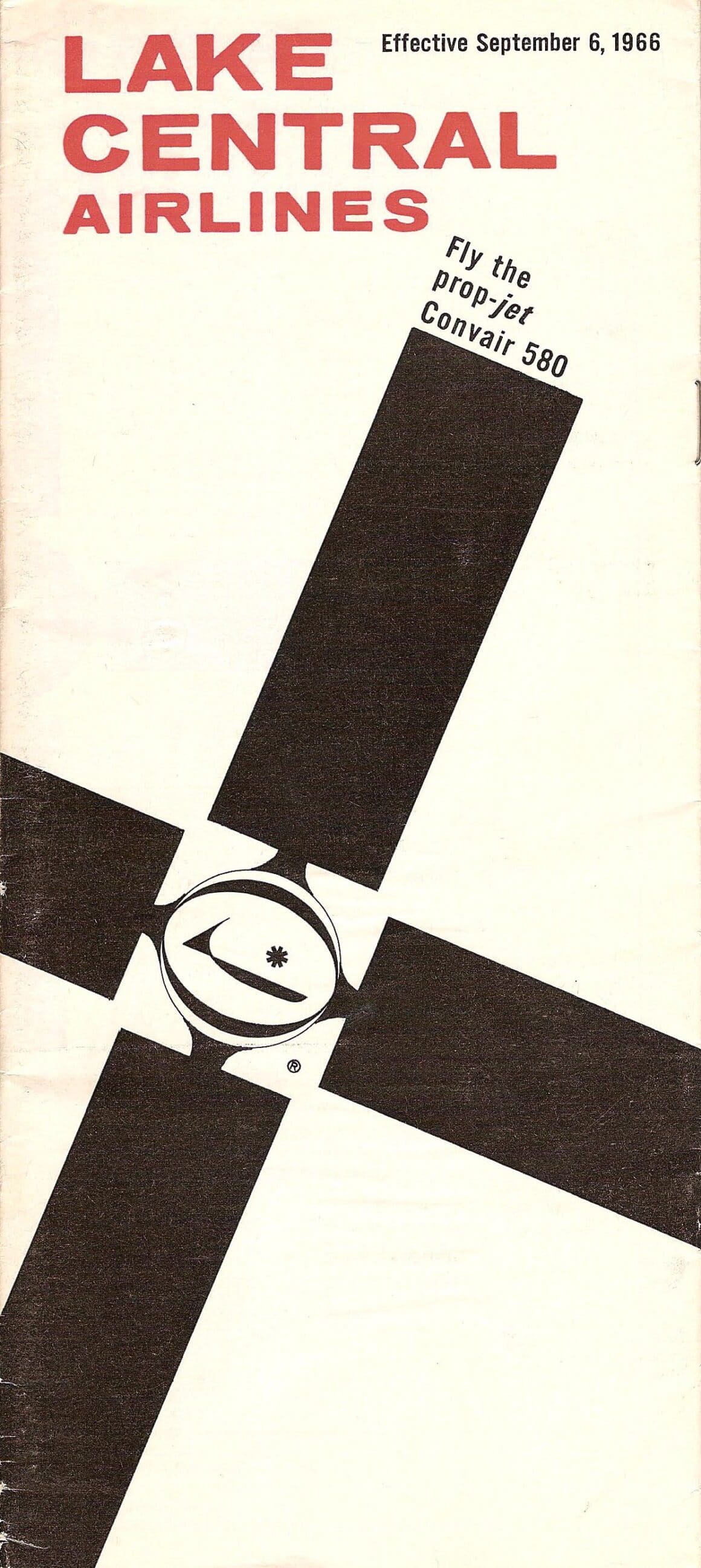
On March 5, 1967, Convair 580 N73130, operating as flight 527 between Columbus, Ohio, and Toledo, disappeared from radar screens as it made its way through the evening sky in western Ohio. Thirty-eight people (35 passengers plus a crew of 3) lost their lives that night in Lake Central’s first and only fatal accident. Reminiscent of the Nord in-flight engine failures, an improperly machined propeller blade had failed on the right engine causing all 4 blades to separate from the hub. One of the blades caused catastrophic damage to the fuselage as it sliced through the aircraft cabin.
A warning telegram from the FAA had been received by Lake Central and other operators of the 580 just two days prior: check propeller hydraulic fluid for signs of steel powder or filings. A problem with some of the 580 props had been reported to the agency on March 2. The hydraulic fluid in N73130’s right engine had passed inspection and, even though Lake Central was not at fault, the accident was another blow to the company’s reputation.
In the fall of 1967, a new advertising campaign was introduced; Lake Central became “The Airline with a Heart”. As part of the campaign, romantic phrases were given an aeronautical twist: “We have planes for you later this evening”, and “love at first flight” were a couple of the phrases that graced LCA’s print ads. As part of the campaign, the company began painting the tails of the 580s and the Nords bright red with a white heart emblem in the center.
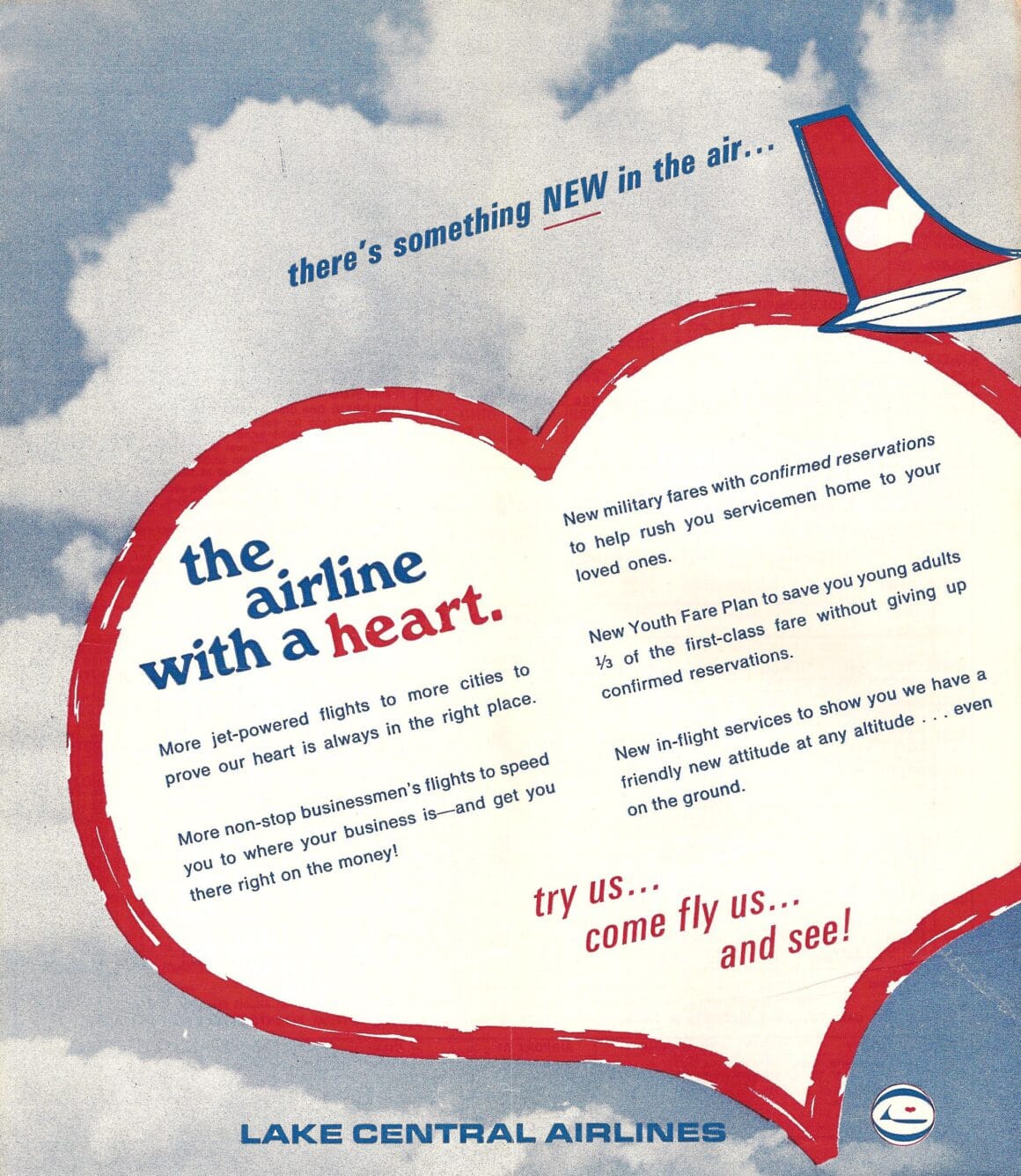
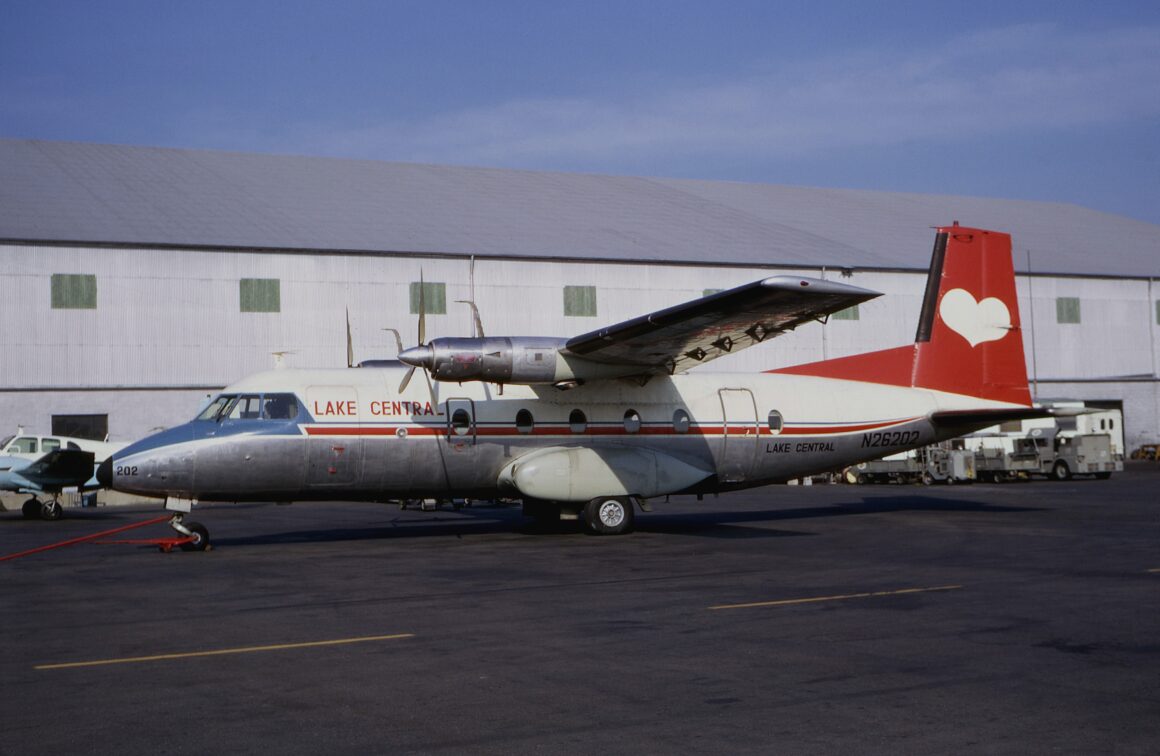
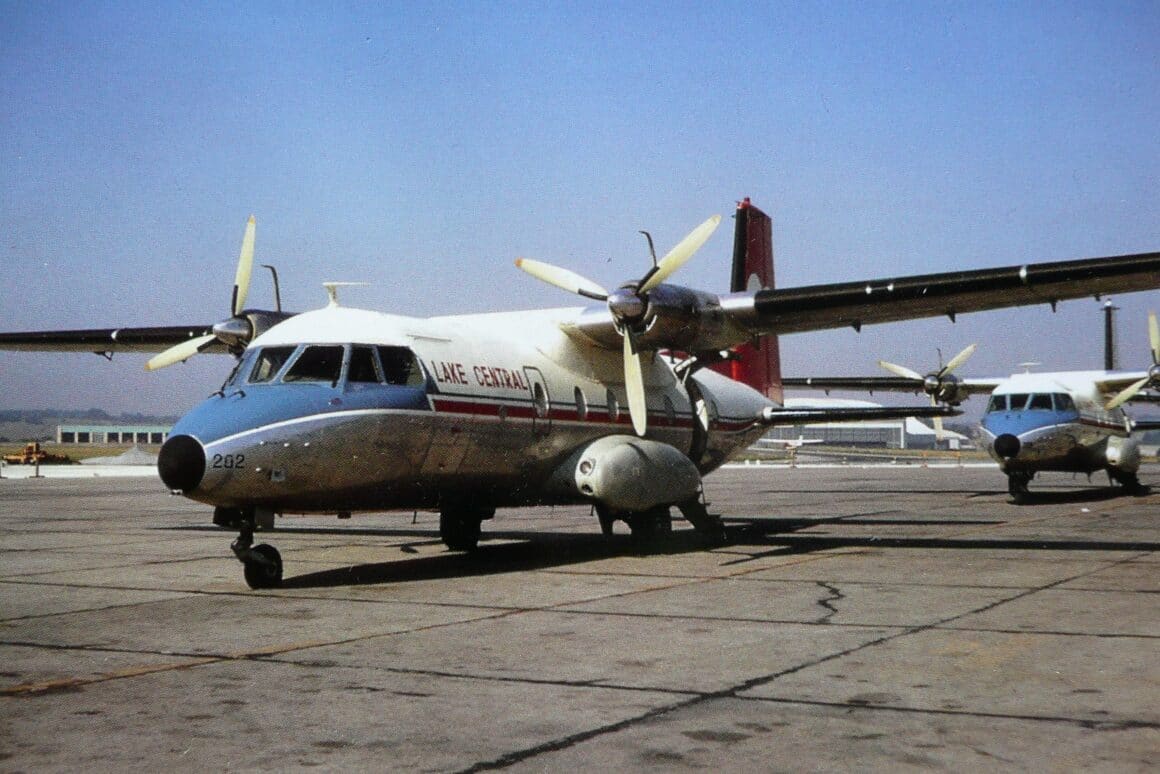
But it was too little, too late. Lake Central’s ledgers were once again bleeding red ink and the company succumbed to a takeover by Allegheny Airlines in 1968. On July 1 of that year, Lake Central’s identity was lost as Allegheny issued the first timetable of the merged companies.
The “Airline with a Heart” was now just a memory as its system was incorporated into Allegheny’s route map above the slogan “People in a Hurry Fly Allegheny”.
